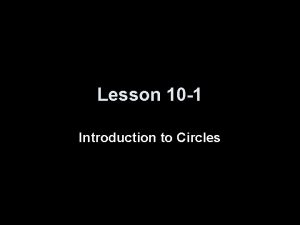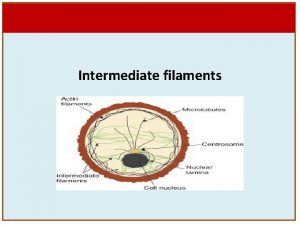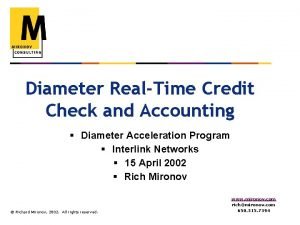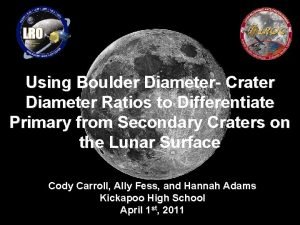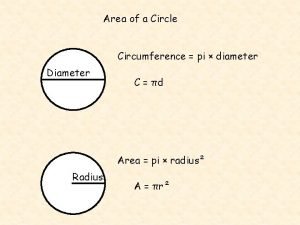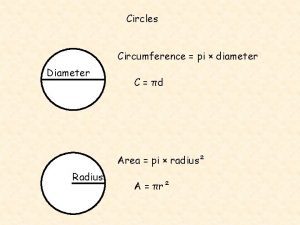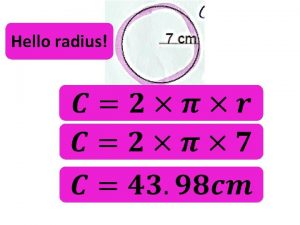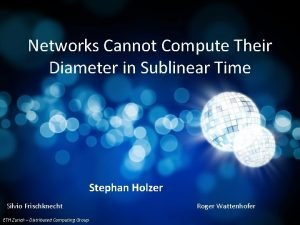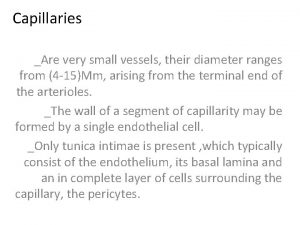Their name reflects their diameter which is the


















- Slides: 18

Their name reflects their diameter, which is the diameter of the microfilaments and microtubules Microfilaments

Microfilament structure • Microfilaments are actin protein polymers organized by actin -bound proteins into functional groups and networks. Microfilaments are linear polymers of the globular protein actin. The globular monomer (G-actin) polymerizes into filamentous (F-) actin.

Different structures in the cells In addition to actin, the microfilaments contain or are closely associated with a number of other proteins, including tropomyosin, α-actinin, filamin, and a 130 KDa protein. • Microfilaments can be arranged in a variety of different structures in the cells. Each of these structures has specific roles in the cell.

Dalton • The dalton or unified atomic mass unit (symbols: Da or u) is a unit of mass widely used in physics and chemistry. • The molecular masses of proteins, nucleic acids, and other large polymers are often expressed with the units kilodaltons (k. Da), megadaltons (MDa), etc.

• Actin is a family of globular multi-functional proteins that form microfilaments. An actin protein is the monomeric subunit of two types of filaments in cells : • microfilaments, one of the three major components of the cytoskeleton, and thin filaments, part of the contractile apparatus in muscle cells.

Actin filament polymerization • Generally, actin filament polymerization occurs over three phases: A nucleation phase, an elongation phase and a steady state phase. Nucleation, elongation, and steady state phase of actin filament assembly.

• 1)During the nucleation phase the formation of a stable 'actin nucleus' occurs. In the initial nucleation phase, ATP – G-actin monomers slowly form stable complexes of actin. • • 2)These nuclei are more rapidly elongated in the second phase by addition of subunits to both ends of the filament. • 3)In the third phase, the ends of actin filaments are in a steady state with monomeric ATP – G-actin. (After their incorporation into a filament, subunits slowly hydrolyze ATP and become stable ADP – F-actin. Note that the ATP-binding clefts of all the subunits are oriented in the same direction in F-actin. )

• Microfilaments Functions: • 1)Microfilaments play an important role in the organization of the plasma membrane, including surface structures such as microvilli. (singular: microvillus, each of a large number of projections from the surface of some cells. )

• 2)Microfilaments can be attached to the plasma membrane as a tight network of filaments called the cell cortex and maintain its organization.

• 3)In epithelial cells, microfilaments form a retractable band called a bonding band around the cell by attaches to adherens junctions and tightens the epithelium.

• 4)In migrating cells, the filamentous network is located at the front of the cell at the leading edge (lamellipodium /plural lamellipodia) that can appear as protrusions called the filopodia in the cell.

Cell migration • Cell migration is a central process in the development and maintenance of multicellular organisms. Tissue formation during embryonic development, wound healing and immune responses all require the coordinated movement of cells in particular directions to specific locations.

• 5)Many cells have specialized contractile microfilaments called stress fibers that attach to the base surface through specialized areas called focal adhesions.

• 6)At the last stage of cell division, after all the organelles have doubled and dissociated, a contractile ring is formed and with its contraction results in a process called cytokines that causes the daughter cell to form.

Actin filaments association with myosin • Actin filaments, usually in association with myosin, are responsible for many types of cell movements. • Muscle contraction thus results from an interaction between the actin and myosin filaments that generates their movement relative to one another. The molecular basis for this interaction is the binding of myosin to actin filaments, allowing myosin to function as a motor that drives filament sliding.

Myosin protein • Myosin is the prototype of a molecular motor—a protein that converts chemical energy in the form of ATP to mechanical energy, thus generating force and movement. The most striking variety of such movement is muscle contraction, which has provided the model for understanding actin-myosin interactions and the motor activity of myosin molecules.

variety of movements of non muscle cells • However, interactions of actin and myosin are responsible not only for muscle contraction but also for a variety of movements of non muscle cells, including cell division, so these interactions play a central role in cell biology. Moreover, the actin cytoskeleton is responsible for the crawling movements of cells across a surface, which appear to be driven directly by actin polymerization as well as actinmyosin interactions.

Cells crawling • Cells crawl for all sorts of reasons: to form new tissue during embryonic development; to heal wounds; to defend against invading microorganisms; to remodel bone; to regenerate nerves, …
 Latin conditionals
Latin conditionals Name all rays
Name all rays Name the diameter
Name the diameter Hình ảnh bộ gõ cơ thể búng tay
Hình ảnh bộ gõ cơ thể búng tay Slidetodoc
Slidetodoc Bổ thể
Bổ thể Tỉ lệ cơ thể trẻ em
Tỉ lệ cơ thể trẻ em Chó sói
Chó sói Chụp tư thế worms-breton
Chụp tư thế worms-breton Bài hát chúa yêu trần thế alleluia
Bài hát chúa yêu trần thế alleluia Các môn thể thao bắt đầu bằng tiếng nhảy
Các môn thể thao bắt đầu bằng tiếng nhảy Thế nào là hệ số cao nhất
Thế nào là hệ số cao nhất Các châu lục và đại dương trên thế giới
Các châu lục và đại dương trên thế giới Công thức tiính động năng
Công thức tiính động năng Trời xanh đây là của chúng ta thể thơ
Trời xanh đây là của chúng ta thể thơ Cách giải mật thư tọa độ
Cách giải mật thư tọa độ Phép trừ bù
Phép trừ bù Phản ứng thế ankan
Phản ứng thế ankan Các châu lục và đại dương trên thế giới
Các châu lục và đại dương trên thế giới


